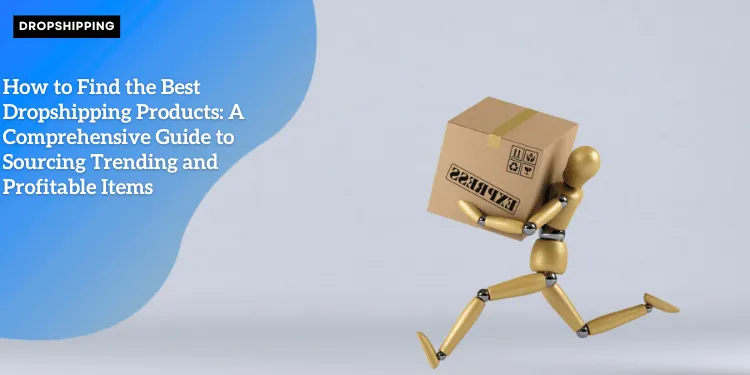How to Find the Best Dropshipping Products: A Comprehensive Guide to Sourcing Trending and Profitable Items

Anúncios
Unlocking the Secrets to Dropshipping Success
Dropshipping has become a popular ecommerce model, allowing entrepreneurs to sell products without holding inventory.
However, the key to success lies in selecting the right products to sell. With countless options available, identifying trending and profitable items can be challenging.
This guide explores seven powerful tools and platforms to help you find the best dropshipping products, along with essential criteria to consider when making your selections.

Anúncios
7 Tools and Platforms to Find Trending Dropshipping Products
1. AliExpress: Find Products Feature
AliExpress, a leading global marketplace, offers a dedicated “Find Products” feature within its business suite.
This tool enables users to explore bestselling dropshipping products by category or view the day’s most popular items.
By leveraging this feature, you can identify trending products that align with consumer demand.
Anúncios
Additionally, AliExpress provides detailed product descriptions, customer reviews, and competitive pricing, making it an invaluable resource for dropshippers.
2. Amazon Best Sellers
Amazon’s Best Sellers page is a goldmine for discovering high-demand products.
This page showcases items with the highest sales across various categories, providing insights into what consumers are currently purchasing.
By analyzing these trends, you can identify products that are likely to perform well in your dropshipping store.
Furthermore, Amazon’s platform allows you to explore customer reviews and ratings, helping you gauge product quality and popularity.
3. Google Trends
Google Trends is an effective tool for examining the popularity of search queries and topics over a period of time.
By entering specific keywords, you can track consumer interest in particular products or niches.
The platform also lets you compare several search terms and filter results by location, helping you uncover trends that are relevant to specific regions.
This data-driven approach ensures that you stay ahead of the curve and capitalize on emerging opportunities.
4. TikTok Hashtags
TikTok has emerged as a hub for viral product discoveries, with users sharing their experiences through hashtags like #tiktokmademebuyit.
By exploring this hashtag, you can uncover fun, creative, and even unconventional products that resonate with TikTok’s audience.
The platform’s algorithm often amplifies unique and visually appealing items, making it an excellent source of inspiration for dropshippers targeting younger demographics.
5. Treendly
Treendly is a comprehensive tool designed to identify trending products across multiple platforms, including Google Trends and social media.
Users can browse trends by category and location or set up alerts for specific products or niches.
This proactive approach ensures that you stay informed about the latest market developments and capitalize on opportunities before they become oversaturated.
6. WatchCount.com
WatchCount.com is a valuable resource for dropshippers looking to source product ideas from eBay.
The platform provides real-time insights into product popularity by tracking the number of views, bids, and watchers for specific listings.
By analyzing this data, you can identify high-demand items and tailor your product offerings accordingly.
7. Social Shopping Sites
Social commerce platforms like Etsy and Pinterest offer visually appealing environments for discovering unique and handmade products.
These platforms allow users to gauge product popularity through social signals such as likes, shares, and comments.
By exploring these sites, you can identify niche products that cater to specific audiences and differentiate your dropshipping store from competitors.
What Makes a Good Dropshipping Product?
Selecting the right products is only half the battle.
To ensure long-term success, it’s essential to evaluate potential items based on the following criteria:
Price
The price point of your products plays a crucial role in determining their appeal to consumers.
Items priced between 50and200 are often considered the sweet spot, as they strike a balance between affordability and profitability.
Lower-priced items may require higher sales volumes to generate significant revenue, while high-ticket products often necessitate additional customer support and marketing efforts.
As dropshipping expert Kamil Sattar, also known as The Ecom King, explains, “Your profit margins are going to be amazing, so you have less to sell, instead of selling more, which I love.”
However, he also cautions that expensive products come with higher costs, including advertising, shipping, and returns.
Therefore, it’s advisable for new dropshippers to start with lower-priced items before venturing into high-ticket products.
MAP Pricing
Minimum Advertised Price (MAP) policies, enforced by some manufacturers, set a pricing floor for their products.
This approach prevents price wars and ensures reasonable profit margins for retailers.
By selecting products with MAP pricing, you can focus on building a high-value ecommerce site without worrying about competing solely on price.
Marketing Potential
Effective marketing is essential for driving traffic and sales to your dropshipping store.
Before launching your store, consider potential promotional strategies, such as creating a blog, offering free product samples, or engaging with online communities related to your niche.
Organic TikTok marketing, for instance, has proven to be a highly effective tactic.
Kamil Sattar recommends creating 30 days’ worth of short-form videos before launching a new TikTok account for your store.
Upselling Opportunities
Upselling and cross-selling can significantly boost your revenue and profit margins.
Inexpensive accessories, such as phone cases or customized mousepads, often have higher profit margins than the primary products they complement.
By bundling related items, you can enhance the shopping experience and encourage customers to make additional purchases.
Low Turnover
Investing in a high-quality website is essential for building a successful dropshipping business.
However, maintaining a site with frequently changing products can be time-consuming and costly.
To maximize your return on investment, consider sourcing low-cost items that don’t require frequent updates, such as tools or personal care products.
Lightweight
In an era where free shipping is often expected, selling large or heavy items can quickly eat into your profits.
Smaller, lightweight products are more cost-effective to ship and can help you maintain competitive pricing.
Scarcity
Products that are difficult to find locally or in traditional retail stores are more likely to attract online shoppers.
By offering niche or unique items, such as medieval costumes or falcon-training equipment, you can tap into underserved markets and differentiate your store from competitors.
Conclusion
| Strategy | Before | After |
|---|---|---|
| 🔍 Research Tools | Relying on word of mouth or limited research methods | Using tools like AliExpress, Amazon Best Sellers, and Google Trends to identify trending products |
| 📊 Product Evaluation | Focusing only on popular products without detailed analysis | Evaluating products based on price, marketing potential, and scarcity to maximize profitability |
| 📈 Trends and Demand | Choosing products with limited data or unproven demand | Analyzing trends and consumer demand to ensure consistent sales and growth |
| 📦 Scarcity and Competition | Offering products with high competition and oversupply | Selecting products with limited competition and higher scarcity to stand out in the market |
As you embark on your dropshipping journey, remember that success often comes from continuous learning and adaptation.
Stay informed about market trends, experiment with different products, and refine your strategies to stay ahead of the competition.
With the right approach, you can unlock the full potential of dropshipping and achieve your ecommerce goals.
